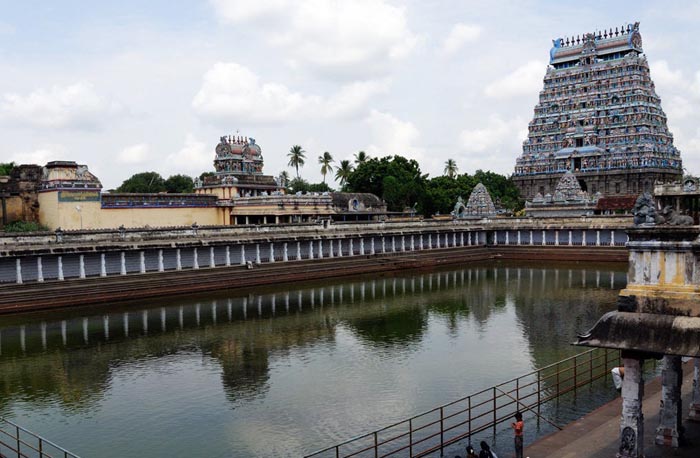Thillai Nataraja Temple

Information of Thillai Nataraja Temple, Chidambaram, Cuddalore, Tamil Nadu
The Thillai Natarajah Temple, popularly known as the Chidambaram temple is situated in a small town called Chidambaram in the state of Tamil Nadu. It is supposed to be quite a well known Hindu shrine and the presiding deity of the temple is Lord Shiva. This particular temple is known to be the leading one amongst all the other similar temples to Saivites. The Thillai Natarajah Temple is believed to have influenced or manipulated the forms of architecture, performance art, worship and sculpture for a period of more than two millenniums.
Thillai Nataraja Temple Religious Significance
Chidambaram is one among the five most sacred temples dedicated to Lord Shiva, each of which distinctively symbolizes one amid the five basic components of life and the Chidambaram temple denotes akasha or aether. Lord Shiva in the Chidambaram temple has been represented in the form of Nataraja, the "Lord of Dance". Nataraja or Natesha is identified as quite an imperative form of Lord Shiva. The form of Nataraja fundamentally hails from Southern part of India, especially Tamil Nadu. The Nataraja in the pose of Ananda Tandava or "Cosmic Dance of Bliss" in the hall of awareness and celestial golden hall or the Chit Sabha is primarily related to this temple. The presiding deity is referred to as the Thillai Koothan in this shrine. Chidambaram is assumed to be the source in relation to the bronze as well as sculpted symbolization of the revered Lord Shiva in the form of cosmic dancer. This particular representation of the Lord Shiva is an archetypal Tamilian notion and pattern in the Chola art form which became prominent since then as a representation of Hinduism.
Thillai Nataraja Temple Mythology & History
The legend of Chidambaram commences with Shiva leisurely walking into the forest of thillai trees also known as the Thillai Vanam. It needs to be mentioned in this respect that the thillai trees refer to a particular variety of mangrove trees which presently grows in the lowlands close to Chidambaram. A group of sages or saints lived in the forest who had the belief in the domination of magic and supposed that God could be guided through customs or magical words. Lord Shiva unhurriedly walked into the forest with dazzling brilliance and magnificence in the appearance of a simple beggar, Bhikshtana and was accompanied by Vishnu in the form of Mohini. The saints and their respective wives were enthralled by the magnificence of the beggar and his partner. The fascination of the women infuriated the sages who as a result made several attempts to slay the disguised Lord Shiva. After all the attempts of the sages failed, a last endeavour was made by the sages by summoning a great demon called Muyalakan who was thought to be a representation of ignorance as well as arrogance. This is when Lord Shiva stepped on top of the demon and turned him completely powerless after which he performed the "Dance of Eternal Bliss" or the Ananda Tandava along with revealing his actual form.
Thillai Nataraja Temple Architectural Significance
The temple has been built according to the Dravidian pattern of architecture and dates back to the 12th and 13th centuries. Alterations and additions were also made in similar pattern in the later period as well. The temple is known to occupy a total area of more than 50 acres. Although the temple confirms a Dravidian style of architecture but it is also regarded to be a combination of various architectural pattern. The sanctum in the inmost part of the temple houses the huge idols of Nataraja and Parvati in the form of Sivakami in the "Hall of Consciousness".
- Andhra Pradesh Temples
- Assam Temples
- Bihar Temples
- New Delhi Temples
- Goa Temples
- Gujarat Temples
- Jammu and Kashmir Temples
- Karnataka Temples
- Kerala Temples
- Madhya Pradesh Temples
- Maharashtra Temples
- Odisha Temples
- Punjab Temples
- Rajasthan Temples
- Sikkim Temples
- Tamil Nadu Temples
- Telangana Temples
- Uttar Pradesh Temples
- Uttarakhand Temples
- West Bengal Temples